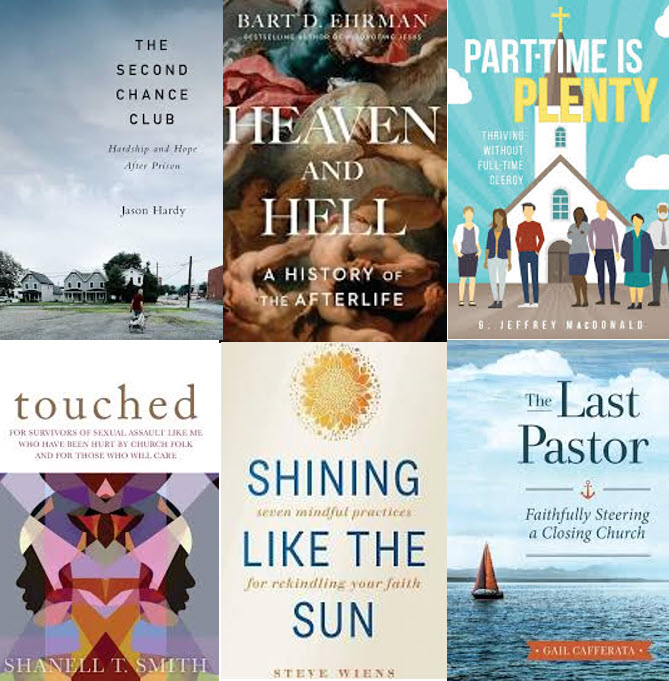Over the last month, I’ve read a number of great new books. The ten best volumes follow.

- (5+) Part-Time is Plenty: Thriving Without Full-Time Clergy by G. Jeffrey MacDonald (Westminister John Knox Press, 2020)
- (4.5) Heaven and Hell: A History of the Afterlife by Bart D. Ehrman (Simon & Schuster, 2020)
- (4.5) Touched: For Survivors of Sexual Assault Like Me Who Have Been Hurt by Church Folk and Those Who Care by Shanell T. Smith (Fortress Press, 2020)
- (4.5) Shining Like the Sun: Seven Mindful Practices for Rekindling Your Faith by Steve Wiens (Fortress Press, 2020)
- (4.0) Spiritual Conversations with Children by Lacy Finn Borgo (IVP, 2020)
- (4.0) The Last Pastor: Faithfully Steering a Closing Church by Gail Cafferata (Westminster John Knox Press, 2020)
- (4.0) The Second Chance Club: Hardships and Hope After Prison by Jason Hardy (Simon & Schuster, 2020)
- (3.5) So Nothing: How to Break Away from Overworking, Overdoing, and Underliving by Celeste Headlee (Harmony, 2020)
- (3.5) The Vision Driven Leader: 10 Questions to Focus Your Efforts, Energize Your Team, and Scale Your Business by Michael Hyatt (Baker Books, 2020)
- (3.0) Analog Church: Why We Need Real People, Places, and Things in the Digital Age by Jay Y. Kim (IVP, 2020)
So What?
G. Jeffrey MacDonald’s Part-Time is Plenty: Thriving Without Full-Time Clergy is the first book I’ve rated 5+ in 2020.
I’ve read more books than I care to admit about the ongoing decline in Mainline Protestant churches as well as the broader decline in Christian belief, belonging and behavior in America. Amazingly, MacDonald’s new book is the first I’ve encountered focused on congregations led by a part-time pastor. As a percentage of all Mainline Protestant congregations those led by a part-time pastor have been increasing for many years, and the rate of that increase is likely to accelerate in the recession or depression that follows the COVID-19 pandemic.
Part-Time is Plenty focuses on thriving congregations led by part-time clergy. Written by a part-time pastor (who happens to have a full-time job as a freelance writer), the exploration is enriched by his visits to 20 thriving Mainline Protestant congregations in 10 states alongside data he gathered about additional congregations by phone and e-mail.
It is time for a variety of stakeholders to recognize the strategic significance of part-time clergy for the future of Mainline Protestantism in America. And, as MacDonald suggests, such recognition should lead to major changes in the way congregations function, the way denominations support congregations and clergy, and the nature and cost of academic preparation for pastoral ministry.